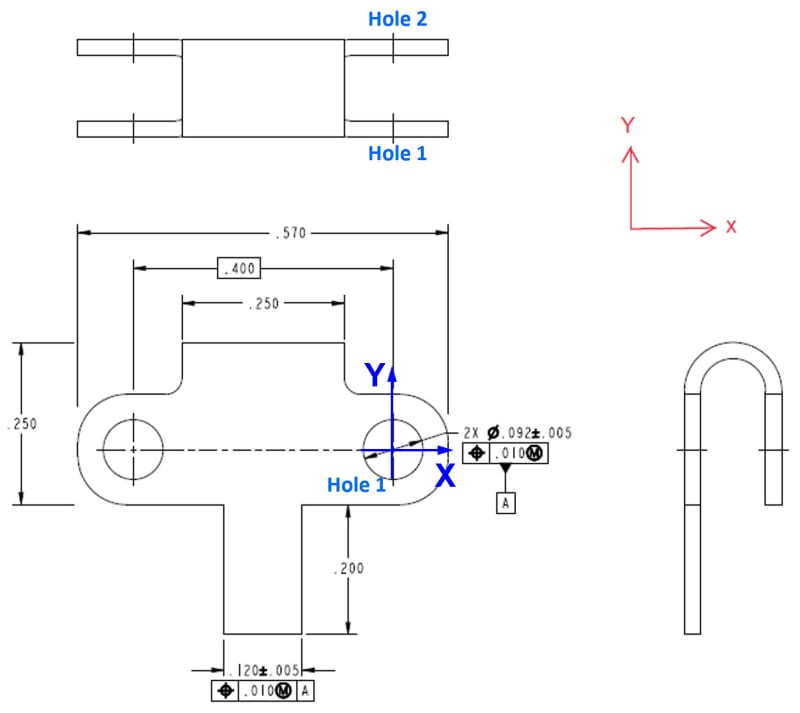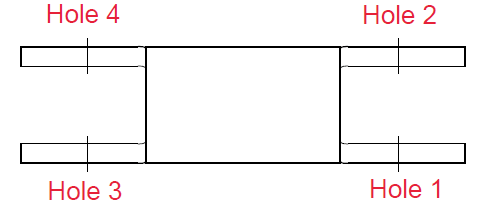Hello All,
I'm new to the forums and have been slowly learning GD&T on the job.
I've attached a simplified example of the part I'm working on. (PLEASE NOTE this is just an example so the part is not fully defined but I think it should serve its purpose for the discussion)
The part is sheet metal and is functionally constrained by the two .092" holes (the part is free to move in the Z direction). Neither hole is more important than the other. Therefore, I have made the hole pattern the primary datum and have controlled the relative location of the two holes with the .010" TP.
I am also trying to control the location of the .200" long tab by using TP w.r.t. the hole pattern datum A.
2 Questions:
1. Is it legal to use TP on .092" holes with no datum reference? - The intent is to control the relative location of the two holes.
2. Is it legal to control the location of the tab using TP? - The intent is to center the tab between the two holes that locate the part.
Thanks for the help!
I'm new to the forums and have been slowly learning GD&T on the job.
I've attached a simplified example of the part I'm working on. (PLEASE NOTE this is just an example so the part is not fully defined but I think it should serve its purpose for the discussion)
The part is sheet metal and is functionally constrained by the two .092" holes (the part is free to move in the Z direction). Neither hole is more important than the other. Therefore, I have made the hole pattern the primary datum and have controlled the relative location of the two holes with the .010" TP.
I am also trying to control the location of the .200" long tab by using TP w.r.t. the hole pattern datum A.
2 Questions:
1. Is it legal to use TP on .092" holes with no datum reference? - The intent is to control the relative location of the two holes.
2. Is it legal to control the location of the tab using TP? - The intent is to center the tab between the two holes that locate the part.
Thanks for the help!


